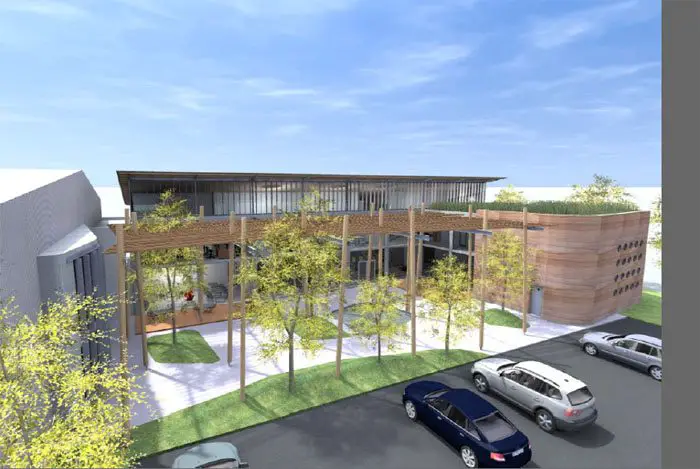The I-CAT groundbreaking ceremony officially marks the start of construction work on the R22-million, 1 949 m2 environmentally sustainable office and warehouse facility commissioned by I-CAT Environmental Solutions.
The new sustainable I-CAT campus being developed at the N4 Gateway Park in Pretoria will feature a 914 m2 office building, and a 1 035 m2 warehouse. Earthworld Architects designed the building by incorporating three pillars of sustainability.Environmental resilience, economic demands, and social sustainability were key focuses of the building’s design.
Architect Rudie Bothanotes that it was important to understand the local climate, and the type of structure, as well as its occupants when designing the building.“The design of the building in relation to the local climate and environment can have a significant impact on the energy consumption of the building,” he explains.
All materials that are being used in the construction of the building have been locally sourced, thereby reducing the energy needed to get them to site. Furthermore, the building has been designed to use as little energy as possible.
“The orientation of the building places the offices closer to the northern side of the building. This ensures greater solar access during winter, while the specially designed roof and overhang reduces solar gain during the summer months,” adds Botha.
Shading devices will be utilised on the northern, eastern and western sides of the building, to limit direct sunlight. However, natural light will still be used during the day, in addition to solar power. Botha adds: “The optimum running stage of the building has been established. If the natural light during the day is not sufficient in terms of light levels, the artificial lighting will automatically be switched on.”
In addition to solar electricity, water in the offices and the showers in the warehouse will be solar heated to reduce energy consumption. To reduce water consumption, rain water will be harvested from the roof and stored in a tank, which will be used in the landscaping around the building. The harvested rain water will further be filtered and purified allowing it to be used in the water cisterns.
When designing the building, the overall level of comfort was considered. Botha reveals that this relates to thermal comfort, visual comfort, acoustical comfort and comfort of air quality.“Several systems were designed to ensure optimum occupant comfort at all times.”
In Summer months the building would be nocturnally ventilated. This will happen in the early hours of the morning, allowing the internal temperature to drop. The fresh air will then be contained for as long as possible. Once the temperature inside the building gets to high the windows at the top of the building will automatically open, allowing the hot built up air to escape.
To maintain the thermal comfort of the occupants, the building will make use of a small inverter air conditioning system which will run from the solar power. When the temperature in the office drops below or above the comfort level, the air conditioning system will automatically activate to get the temperature back to the optimum thermal comfort.
The building also features a courtyard at its southern end. Botha points out that this creates a light environment which will draw cool air into the building. This also creates an environment where people can go and enjoy some time outside. “This courtyard adds to the social sustainability of the building, as you want happy workers, because this improves efficiency from an economic sustainability point of view.”
Botha highlights that the office building and warehouse were also designed to allow I-CAT flexibility in the way in which the buildings can be utilised. Both buildings have been designed with an open plan layout that can be divided into smaller sections if needed.
“The interior of the office building is designed in such a way to allow it to be used as a large open plan office, or to divide it into smaller offices in the future. The warehouse features a column free design, with supporting columns only along the perimeter of the warehouse. This leaves the interior of the warehouse free to be adjusted and changed to suit future needs,” Botha concludes.
I-CAT is a leading environmental solutions company with a primary focus on supplying products and services that assist industrial clients in various aspects of environmental compliance. The company is well positioned to assist all its clients’ needs in environmental management regarding; dust suppression solutions, water solutions, environmental management services, carbon solutions, agro-forestry products and fire solutions.
From: www.i-cat.co.za

